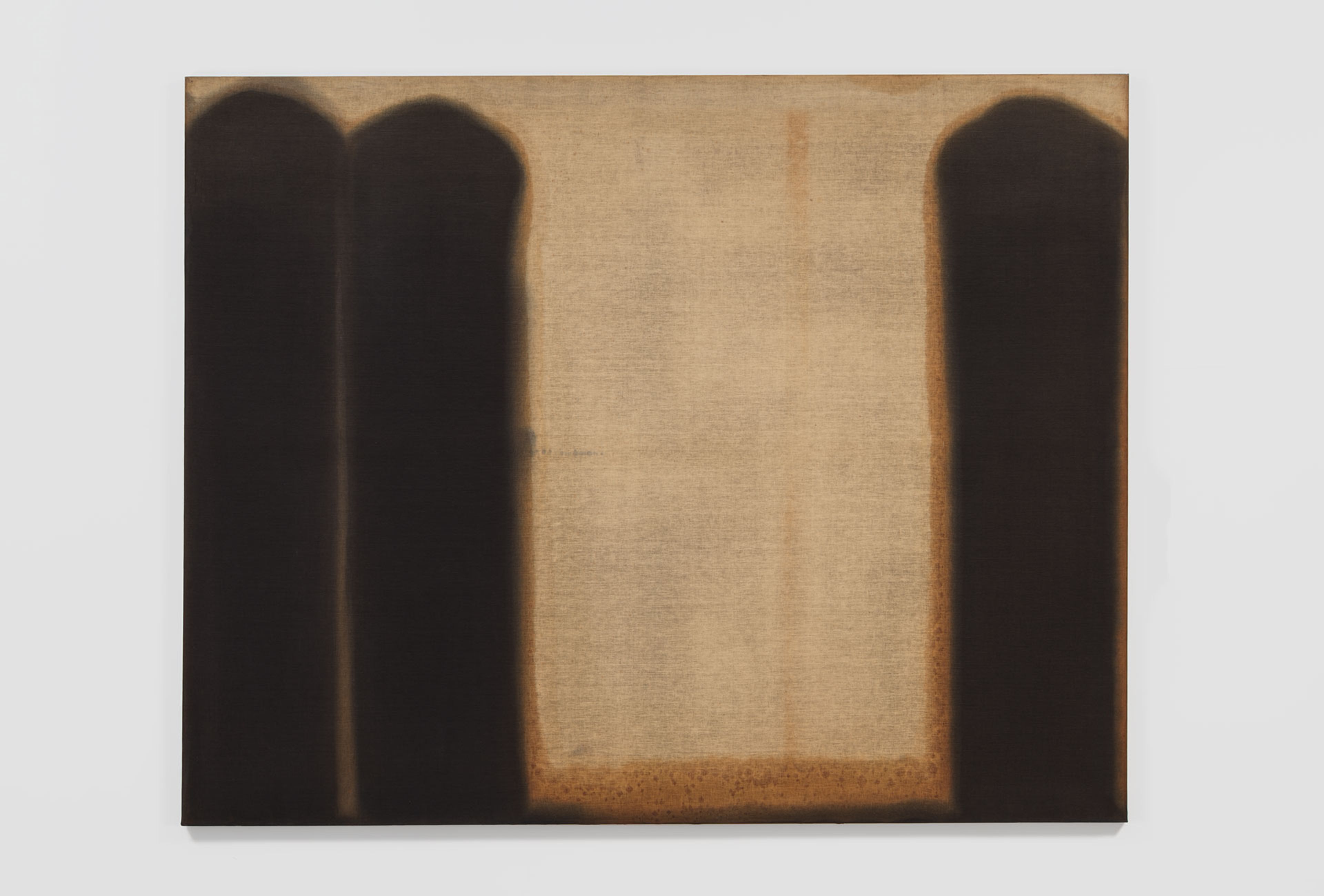Press release — November 5, 2016
2016
Using a restricted palette of ultramarine and umber, Yun created his distinctive compositions by adding layer upon layer of paint onto raw canvas or linen, often applying the next coat before the last one had dried. He then diluted the pigments with turpentine solvent, allowing them to seep into the fibers of the support, staining it in a similar way to traditional ink on absorbent paper. Working directly on his studio floor, he produced simple arrangements of intensely dark, vertical bands surrounded by untouched areas. The division was softened by the blurred edges caused by the uneven rates of absorption of oil and solvent, and the compositions often developed over several days, even months, with the artist adding further layers or letting the pigments bleed out gradually.
Yun visited New York in 1974, where he encountered the work of American postwar artists including Mark Rothko, which led him to further explore ways to divide pictorial space. His paintings from the mid-1970s and the 1980s revolve around a play between presence and absence, with unmarked areas characterized as intervals rather than dematerialized voids. The inherent physicality of his works, in turn, impressed artists such as Donald Judd, who invited Yun to exhibit at his spaces on Spring Street in New York and in Marfa, Texas (Chinati Foundation) during the 1990s in what would be the artist's first solo presentations in the United States.
Today, Yun's work has come to embody the intersecting traditions of Korean scholarly painting and twentieth century abstract art. His intellectually sophisticated, yet understated works transcend the regional themes and materials of his generation to resonate with a global history of contemporary art.
This exhibition will bring together an unprecedented selection of large-scale paintings, many of which have never been shown before. While each work represents an accumulation of Yun's procedures over time, collectively they testify to his lifelong commitment to breaking painting down to its core methods and materials.
Yun Hyong-keun's work has been the subject of solo and group exhibitions worldwide. The artist's estate is primarily represented by PKM Gallery in Seoul. In addition to David Zwirner in New York, Blum & Poe in Los Angeles, Simon Lee Gallery in London, and Axel Vervoordt Gallery in Antwerp show the artist's work.
(New York) David Zwirner is pleased to announce that the gallery will represent the work of Yun Hyong-keun in New York. A survey of the artist's paintings from the 1970s and 1980s is being planned at the gallery’s 537 West 20th Street location for January 2017 and will be the largest solo exhibition of his work in North America to date.
One of the most significant Korean artists of the twentieth century, Yun Hyong-keun (1928-2007) was born in Seoul and received his BFA from the School of Fine Arts at Hongik University in 1957. Over the next four decades, he developed a style of monochromatic abstraction that deconstructed the notion of painting to the repeated application of pigments across a surface.
During the 1960s, Yun became associated with the influential Dansaekhwa (monochromatic painting) movement of Korean artists who experimented with the physical properties of painting and prioritized technique and process. The scarcity of materials following the Korean War (1950-1953) and the country's relative isolation from the international art world led the artists to construct their own sets of rules and structures in relation to abstraction.
